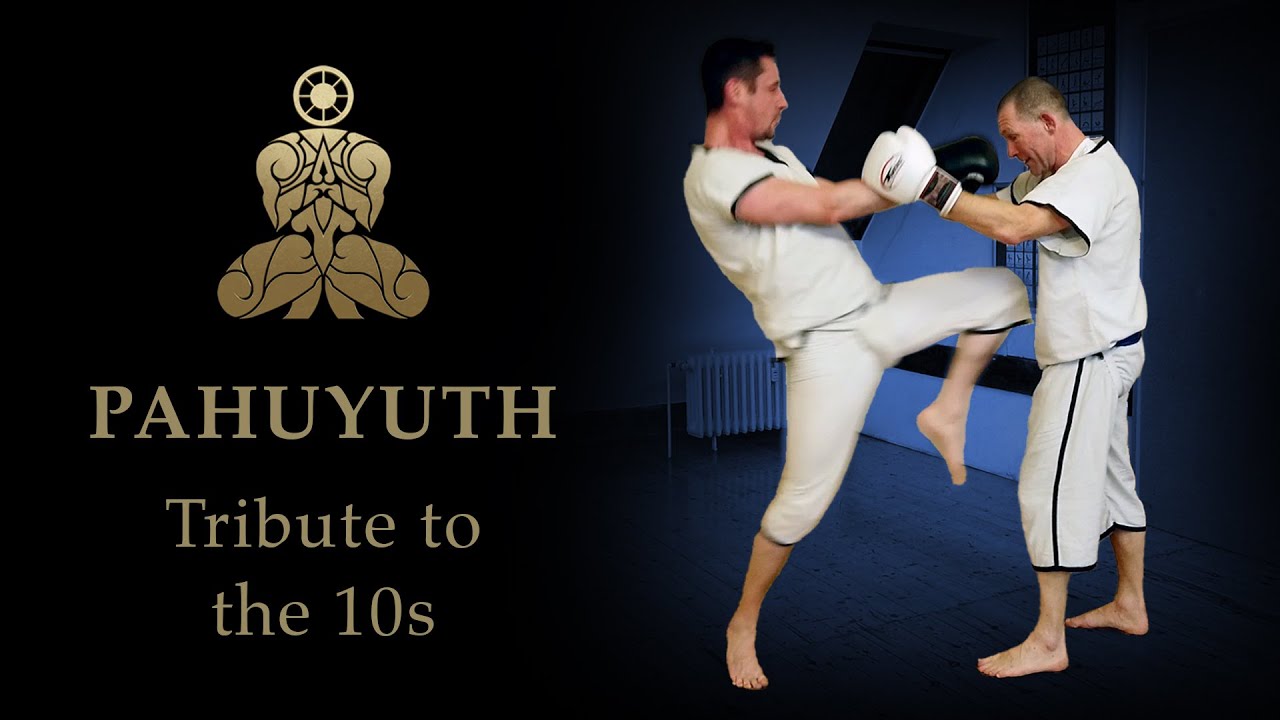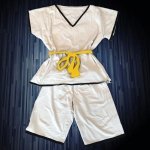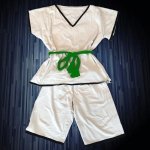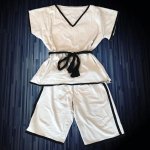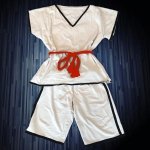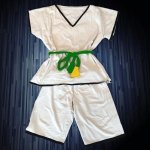Content
Belts and belt steps – the belt levels in Pahuyuth
Pahuyuth has a unique traditional belt system. Unlike other martial arts and combat sports, however, this does not imply a hierarchical structure. The belts in Pahuyuth serve only to make the wearer’s current state of knowledge within his discipline visible.
Origin of the belt colors
The Pahuyuth mediation concept includes physical and psychological learning aspects. The tests are divided into technical qualification and carrier’s worthiness qualification.
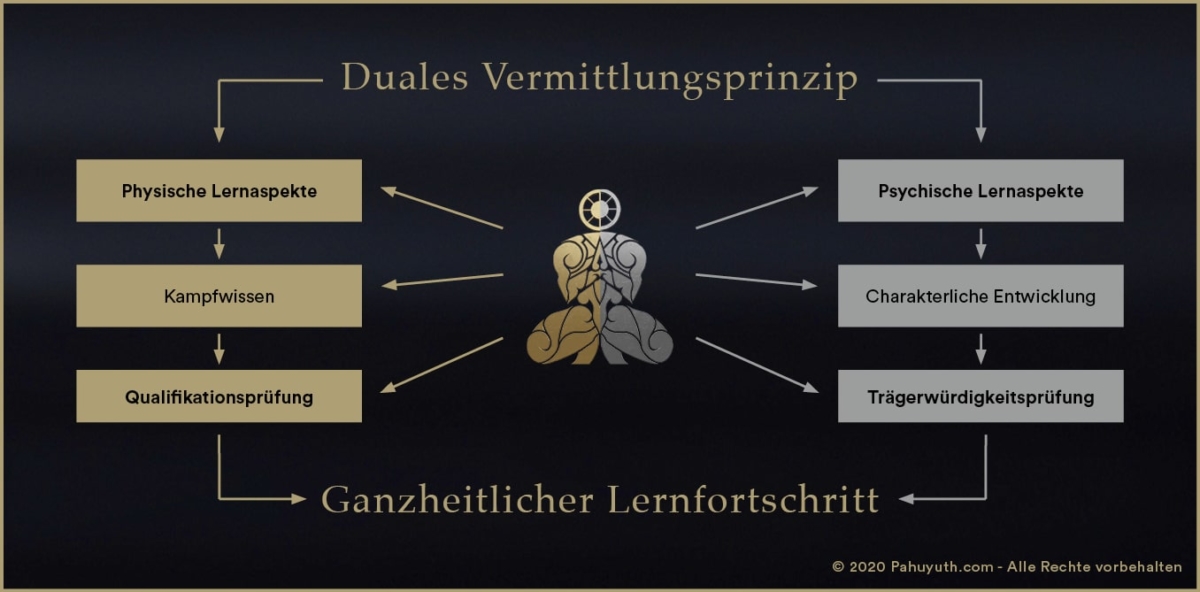
The technical qualification exam tests technical competence (physical learning aspect). During the carrier worthiness tests, the developmental stage of a warrior in the sense of psychological self-attitude (psychological learning aspects) or his individual character is tested.
The technical qualification is tested by the teacher or a qualified examiner. The confirmation of the carrier‘s worthiness is carried out by the college of Pahuyuth members.
In addition to the dual mediation principle, the combat Knowledge of the Pahuyuth was divided into three consecutive learning phases.
The first section is called probationary stage (Lugsidt), the second is called student stage learning level and the third is called teacher stage.
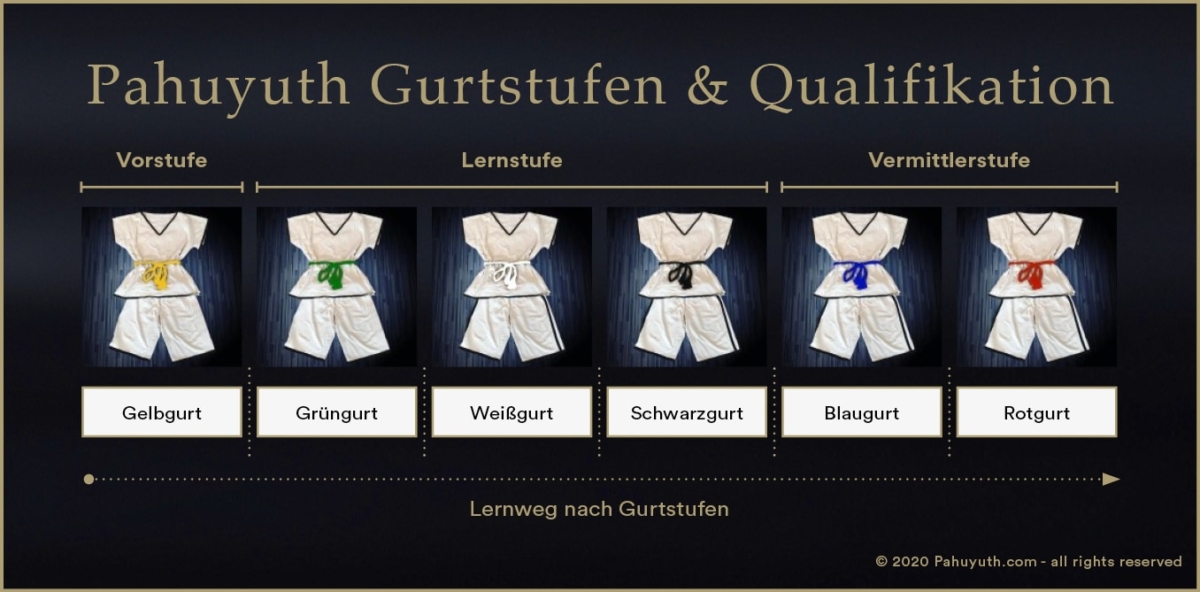
A further subdivision of these sections according to the respective learning content led to the development of the Pahuyuth belt system. It allows a division into
- yellow-belt (probationary level)
- green-belt (basic level)
- white belt (acquisition level)
- black belt (application level)
- blue belt and red belt (prospective teacher and teacher)
as well as belt exams.
The belt stages
Yellow belt – probationary student
In former times, Pahuyuth students had to apply to a teacher, for example by working as temple novices (Dek Wat, church child). Initially, each of these students was only taken in as probationary student to first examine their character and ideas.
The ancient teachers gave them an insight into the fighting knowledge (e.g. through fitness exercises), but no actual fighting techniques to prevent possible abuse.
It was only at a later stage that the teacher decided whether and to what extent it was possible for him to impart the necessary knowledge to the novice and to accept him as a full-fledged student.
Following the Buddhist robes of the temple novices, Pahuyuth students of the probationary stage (Lugsidt Todlong) still wear a golden yellow belt.
green-belt – basic level student
Pahuyuth has always been the fighting method of ordinary people, the first victims of relentlessbrutal violence and slavery, who have developed the martial arts knowledge in a number of war conflicts against mostly stronger adversaries.
In times of war, ordinary citizens, peasants and fishermen were called into the army to defend the country and released after the end of the conflict without becoming regular soldiers. In honor of these warriors, Pahuyuth students of the basic level wear an emerald-green belt color, which is meant to remind of the forest and rural areas.
In the beginner level, Pahuyuth students learn the elementary basic techniques of the martial disciplines of their own choice.
white belt – acquisition level student
The combat knowledge of Pahuyuth is traditionally compared to a pure white cloth, which only discolors by its use.
To hint Pahuyuth intermediate students to the difference between knowledge and its usefulness or use, they wear white belts.
Acquisition level students refine their basic techniques and begin to develop their own fighting style, especially by passing on and teaching their acquired knowledge to younger students.
black belt – application level student
In earlier times, the wearers of the black belt were considered executors and specially trained warriors (special forces).
In the philosophical essence, however, this color means above all one’s own shadow from which the students of the higher level may step out. They do this by developing their personal fighting style and detaching themselves from the Pahuyuth combat methodology, both physically and mentally.
Application level students specialize their techniques and gain self-knowledge through sharing and teaching their knowledge.
Blue belt – prospective teacher
The colour blue is often equated with stately authority and nobility. However, it is not so much the award of a supposedly higher-ranking person (in Pahuyuth all human beings are considered equal), but rather a hint to the wearer of such a belt to deal with his status and the responsibility as a warrior and as a human being in order to advance his personal self-discovery and self-knowledge.
Blue belts are fully trained warriors in their respective disciplines, who therefore no longer have student status, but are not yet teachers.
Red Belt – Teacher
Since time immemorial, red has been the color of the people and of blood. To honor all those who died for peace and freedom, Pahuyuth teachers wear a red belt.
A teacher in the understanding of Pahuyuth is never a “master” or “ruler” over his disciples, but always only a simple but experienced warrior and person who shares his knowledge willingly and always with a recommendatory character.
The role of the teacher is similar to that of a ferryman who has already crossed a raging stream himself and is now helping others with their crossing.
Yellow-Green Belt – special belt
The yellow-green belt is a special belt for admitted students who have not yet reached the age of fourteen yet.
Yellow-green belts have all the rights and obligations of a green belt. Only a short yellow stripe at the end of the green belt indicates their special status. At the age of fourteen, the yellow stripe is omitted.
Examinations, certificates and examination fees
The pahuyuth’s traditional examination system is based exclusively on the de facto expertise and competence in the field of pahuyuth or in its sub-areas.
It does know belts and belt steps and associated examinations. However, there are no certificates, diplomas or examination fees, as these, in contrast to the actual martial arts knowledge, do not entail any combative relevance.
Only the belt or colour, which is always awarded free of charge by a Pahuyuth teacher, confirms the current state of knowledge of the respective wearer and serves as an indicator of the minimum amount of knowledge that can expected from this person.
However, the existence of belts and belt levels does not create any hierarchy of any kind, nor is it intended to serve as a rank badge or status symbol, as this would contradict the principles of freedom and equality of the Free-Warriors.

The background to this independent certification model is that, in the understanding of Pahuyuth, it is never a question of mutual awarding of certificates or the establishment of a social or economic structure, but only of the transfer of potentially life-extending expertise.
This is either demonstrably present and can be formally confirmed in the context of an examination, or not.
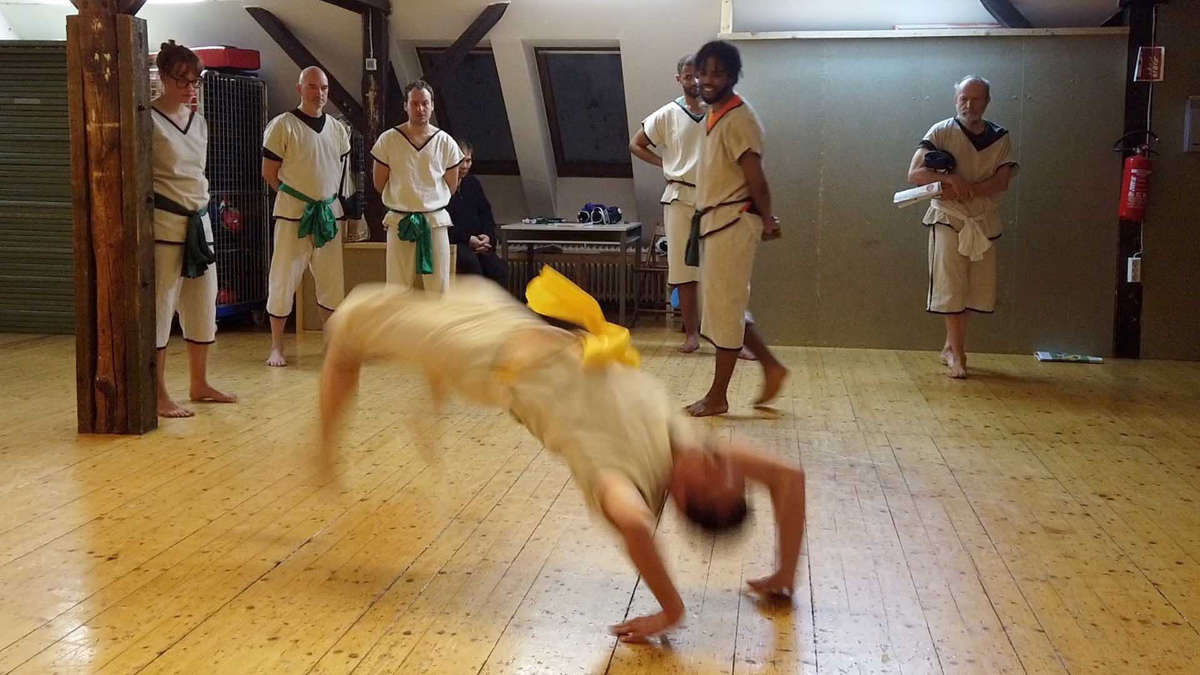
A Pahuyuth practitioner always carries his true belt-rank within himself because the Pahuyuth-knowledge has become a part of him. In doing so, he also effortlessly recognizes those who only pretend to have this knowledge but do not possess it.
A true Pahuyuth graduation can never be obtained by fraud, bought or given as a gift. It can only earned.


